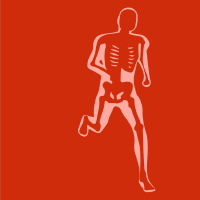Topic Menu
► Topic MenuTopic Editors


Interdisciplinary Approaches to Sports in the 21st Century

Topic Information
Dear Colleagues,
Sports is an important area of modern social life. The struggles of athletes gather crowds of fans, as new records are not infrequently set. These records are made possible by the comprehensive preparation of athletes, which takes into account new discoveries from various scientific disciplines. Sport activities in any form are becoming increasingly popular. It should be noted that sport is also a very attractive way to spend free time. It brings psychophysical benefits to athletes through training, competing, restoring and actively exploring the world. Accordingly, we are pleased to invite you to submit articles for the Topic "Interdisciplinary Approaches to Sports in the 21st Century." We invite original research papers, reviews and opinions on sports at the interface with areas such as biomechanics, economics, ethics, history, kinesiology, management, pedagogy, performance, philosophy, physiology, psychology, safety and tourism. This Topic has been spread over five periodicals to ensure full coverage: Behavioral Sciences; European Journal of Investigation in Health; Psychology and Education; Journal of Functional Morphology and Kinesiology; Sports; and Sustainability.
Dr. Paweł A. Piepiora
Dr. Zbigniew Norbert Piepiora
Topic Editors
Keywords
- combat sports
- individual sports
- team sports
- mental activity
- physical activity
Participating Journals
| Journal Name | Impact Factor | CiteScore | Launched Year | First Decision (median) | APC | |
|---|---|---|---|---|---|---|

Behavioral Sciences
|
2.5 | 2.6 | 2011 | 27 Days | CHF 2200 | Submit |

European Journal of Investigation in Health, Psychology and Education
|
3.0 | 4.4 | 2011 | 28.4 Days | CHF 1400 | Submit |

Journal of Functional Morphology and Kinesiology
|
2.6 | 4.2 | 2016 | 18.9 Days | CHF 1600 | Submit |

Sports
|
2.2 | 4.1 | 2013 | 20.4 Days | CHF 1800 | Submit |

Sustainability
|
3.3 | 6.8 | 2009 | 20 Days | CHF 2400 | Submit |

MDPI Topics is cooperating with Preprints.org and has built a direct connection between MDPI journals and Preprints.org. Authors are encouraged to enjoy the benefits by posting a preprint at Preprints.org prior to publication:
- Immediately share your ideas ahead of publication and establish your research priority;
- Protect your idea from being stolen with this time-stamped preprint article;
- Enhance the exposure and impact of your research;
- Receive feedback from your peers in advance;
- Have it indexed in Web of Science (Preprint Citation Index), Google Scholar, Crossref, SHARE, PrePubMed, Scilit and Europe PMC.

